What is Minimally Invasive Surgery? (MIS)
Minimally invasive surgery, also called laparoscopy or laparoscopic surgery, is used on patients diagnosed with many different conditions. During minimally invasive surgery, surgeons operate through one or more small incisions, depending on the type of surgery. The da Vinci® Surgical System is a form of laparoscopic surgery that enables surgeons to operate using a 3D HD vision system and tiny instruments that bend and rotate far greater than the human hand. As a result of this technology, da Vincienables surgeons to operate with enhanced vision, precision and control.
Why is the product called the da Vinci Surgical System?
The da Vinci Surgical System enables surgeons to operate minimally invasively through a few small incisions or the belly button, similar to traditional laparoscopy. Using the da Vinci System, surgeons site at a nearby ergonomic console. da Vincifeatures a magnified 3D HD vision system and tiny wristed instruments that bend and rotate far greater than the human hand. As a result of this technology, da Vinci enables surgeons to operate with enhanced vision, precision and control.
Has the da Vinci Surgical System been cleared by the FDA?
The U.S. Food and Drug Administration (FDA) has cleared the da Vinci Surgical System for use in a wide range of procedures.
What procedures have been performed using the da Vinci Surgical System?
Da Vinci surgical procedures are routinely performed in the specialties of: general, urological, gynaecology, transoral, cardiac, thoracic, and paediatric surgery. da Vinci® Single-Site™ technology enables surgeons to remove the gallbladder and uterus through one small incision in the belly button. Over the last decade, the da Vinci System has brought minimally invasive surgery to over 2 million patients worldwide.
Are there studies showing that da Vinci surgery is better than traditional open surgery?
Since 1998, more than 7,000 peer-reviewed publications have appeared in various clinical journals on da Vinci Surgery. The amount of clinical evidence on the da Vinci System is increasing at a rate of 100 publications per month.
Where is the da Vinci Surgical System being used now?
The da Vinci Surgical System is used in major centres in the United States, France, Italy, Germany and Spain, as well as in many other countries around the world. To locate a hospital or surgeon, go to: http://www.davincisurgeonlocator.com/
Will the da Vinci Surgical System make the surgeon unnecessary?
On the contrary, the da Vinci System is designed to enable surgeons to operate with enhanced vision, precision and control. The da Vinci System translates the surgeon's hand movements into smaller, precise movements of the miniaturised instruments inside the patient's body. The da Vinci System is 100% controlled by the surgeon and can never be programmed to make surgical manoeuvres on its own.
While using the da Vinci Surgical System, can the surgeon feel anything inside the patient's chest or abdomen?
Motors on the system move the robotic arms and instruments in response to the surgeon’s hand movements on the controls. As a result, the surgeon receives or feels subtle physical “feedback” while holding the controls. This feedback provides a substitute for the actual sense of touch and is augmented by the enhanced vision provided by the high definition 3D view. While surgeons are not able to touch or feel the anatomy as in open surgery, they indicate that the visualization, precision, dexterity and control that da Vinci offers them during surgery more than compensates for the loss of touch.
Is a surgeon using the da Vinci Surgical System operating in "virtual reality"?
No. Although seated at a console a few feet from the patient, the surgeon views an actual image inside the patient’s body while operating in real-time. At no time does the surgeon see a virtual image, or program the system to perform any independent maneuvers outside of the surgeon's direct, real-time control.
Is this "robotic surgery"?
Robotic surgical devices are designed to perform entirely independent movements after being programmed by a surgeon. The da Vinci Surgical System is a computer-enhanced system that introduces a computer interface and 3DHD vision system between the surgeon's eyes, hands and the tips of micro-instruments. The system mimics the surgeon's hand movements in real time. It cannot be programmed, nor can it make decisions on its own to move or perform any type of surgical maneuver. So, while the general term "robotic surgery" is often used to refer to our technology, it is not robotic surgery in the strictest sense of the term.
Is this "telesurgery"? Can you operate over long distances?
Our robotic surgical platforms currently allow surgeons to perform complex procedures using a minimally invasive approach. In the interest of improving the surgeon training experience and expanding training programs, we are exploring telesurgery as a way to provide more convenient or expedient surgeon-to-surgeon proctoring and coaching. We see telesurgery as a means to allow surgeons to learn and optimize their robotic-assisted surgery skills under the guidance of leading specialists – with less disruption to clinical schedules due to travel — and therefore less impact on patients.
Is this technology patented?
Intuitive has an extensive patent portfolio of internally developed technology, as well as a variety of patents acquired or exclusively licensed from leaders in surgical robotics.

